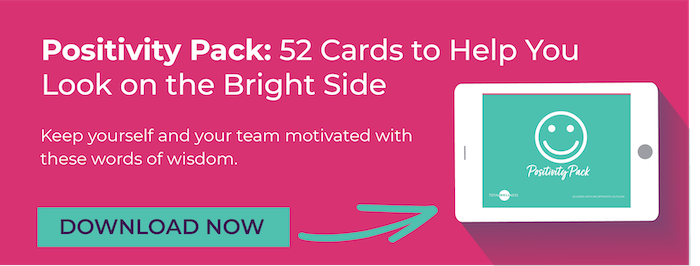 Nobody will argue the fact that employee engagement is important. What they will argue, though, is how you can go about boosting employee engagement in your workplace and in your wellness program.
Nobody will argue the fact that employee engagement is important. What they will argue, though, is how you can go about boosting employee engagement in your workplace and in your wellness program.
There has been lots of research done, and there are lots of recommendations and best practices for building up an engaged workforce. When it comes to wellness, we think in order to learn which engagement best practices are truly best, you need to know just how engaged (or unengaged) your workforce is.
Now we wouldn’t suggest a whole new engagement question without providing some type of answer—so here are a few ways you can get gauge your employees’ engagement with your wellness program.
Participation
Participation and engagement are not the same thing! But you can use participation to get a glimpse at how engaged your workforce is.
Participation includes things like sign-ups, event attendance and “check-box” activities. It’s the one-time activities your employees have to do to be part of your wellness program.
If you consistently have high percentages of participation at your wellness events, you’re probably doing okay on engagement. Consistent participation means employees are in it for the long haul. They want to be part of your wellness program.
Feedback
One of the best ways to determine whether or not your employees are engaged with wellness is to ask them. At a basic level, that might mean conducting surveys or providing comment cards.
Obviously there are some drawbacks to those types of direct questions. You could be a little more indirect by asking questions about your wellness program to learn what your employees actually know.
The more they know about your program and the more accurately they can relay that back to you, the more engaged they are. That accuracy tells you that your employees are paying attention to what you’re saying about health at work.
Results Over Time
Direct health results from biometric screenings and health assessments can be a great teller of your employees’ engagement. But only if you measure those health metrics over time.
Each screening gives you a snapshot of your workforce. It tells you what their health is as a whole at the moment of the screening. Comparing those snapshots from year to year can help you to identify trends.
Positive trends—health improvements—usually suggest good levels of employee engagement. Negative trends usually suggest the opposite.
Individual Goals
If your employees are engaged with your wellness program, they’re going to go beyond your wellness program. They’re going to take their health into their own hands—which is a great thing!
When you start to see employees setting and reaching health goals on their own—outside of things mandated by your program—you’ve reached an awesome level of engagement. That means your wellness program is doing exactly what it’s supposed to be empowering your employees to get healthy.
Word of Mouth
One of the best measures of engagement is word of mouth. Are your employees talking about your wellness program? Are they encouraging one another to go to events? Asking for healthy advice and resources? Checking in with their coworkers’ progress?
Those are all things you’ll hear from a workforce who is engaged with their wellness program. Those conversations show that your employees are interested in your wellness program for themselves and for the healthy benefit it can have in their lives.
Observation
You can observe engagement at certain events and with certain types of people—so obviously this isn’t always the most reliable measure. It can help you get an idea, though.
Employees who are engaged with a wellness program want to take part. They want to go to events, make healthy choices and build up a healthy lifestyle. You’ll notice these people at wellness events because they’ll be happy to be there.
Engaged employees aren’t just checking wellness of their list to earn in an incentive. They enjoy it and utilize what your program has to offer. The more happy people you notice who are excited to be at your wellness events, the better your engagement is.
Few people agree on the best way to build an engaged workforce. In order to know what way really is best, you need to be able to tell just how engaged your employees are with your wellness program.
Where do you think your workforce sits when it comes to wellness engagement?



